THE EXCEPTIONALLY LOVELY SUMMER we enjoyed in the Northwest this year gave way to fall right on schedule last Saturday, almost as though a switch had been flipped. The rain began—it’s still raining—and I’m in my usual nostalgic autumnal mood, mourning the warmth and beauty of summer in the garden at the same time I’m ready to snug in and savor the cozy joys of fall.
We were in France this time last year, so I’ve been reliving that trip in my journal and photos, and today I’m thinking about the rainy September day I spent at Chateau de Malmaison, the country estate of Empress Josephine just outside of Paris.
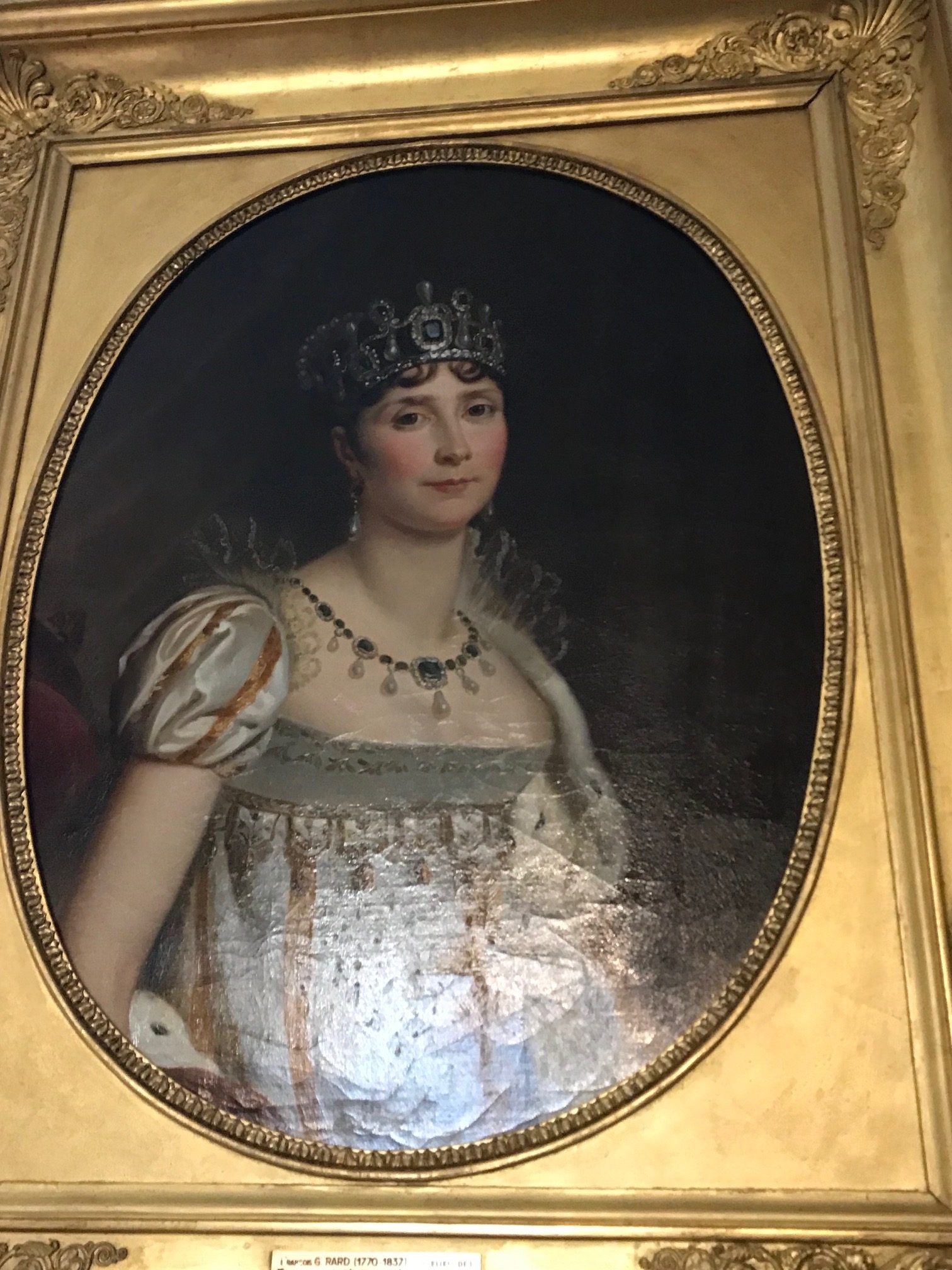
Empress Josephine
Born Marie-Joseph-Rose de Tascherde la Pagerie in Martinique, Josephine was a poor widow with two children whose first husband had been killed during the French Revolution, while she herself was imprisoned. Somehow, she survived the Terror, and from then on, as our guide put it, she is going to “burn the candle from both sides.” Then known as Rose, she meets Napoleon at one of the salons she hosts, where people are going “to talk and make philosophy,” and it’s love at first sight. They marry and, interestingly, he gives her a new name, Josephine. While he’s away at war, she decides they need a country estate and buys Malmaison for an amount that horrifies Napoleon—and that’s before the extensive renovations she undertakes.
Besides being a woman in a position of power in the 18th-19th centuries, what’s always especially interested me about Josephine is her love of flowers, roses in particular. She had some of the first greenhouses in Europe built at Malmaison, and more than 200 plants including tree peonies, hibiscus, camellias and dahlias were grown for the first time in France there. Instead of having a lush rose garden (as I had always envisioned), it turns out that most of her collection of more than 250 rose varieties were planted in pots and kept in the greenhouses till they bloomed, and then moved out to the garden.
For me, part of the joy of visiting historic houses and estates is trying to imagine what life would have been like there in the past. Sometimes, it’s impossible—the house is simply too huge, too grand, too over-the-top and feels more like a government building than a cozy home to give you any sense of what it would really have felt like to live there, except maybe as a servant.
Malmaison wasn’t like that. Our tour began with the interior of the house—lovely, beautiful rooms filled with exquisite things: chairs and sofas, paintings and furnishings, china and glassware. We happened to be visiting on a day when people dressed in historical costumes from the time of the French Revolution were there for some sort of re-enactment event, which helped with the time-traveling, slipping-into-the-past feeling.
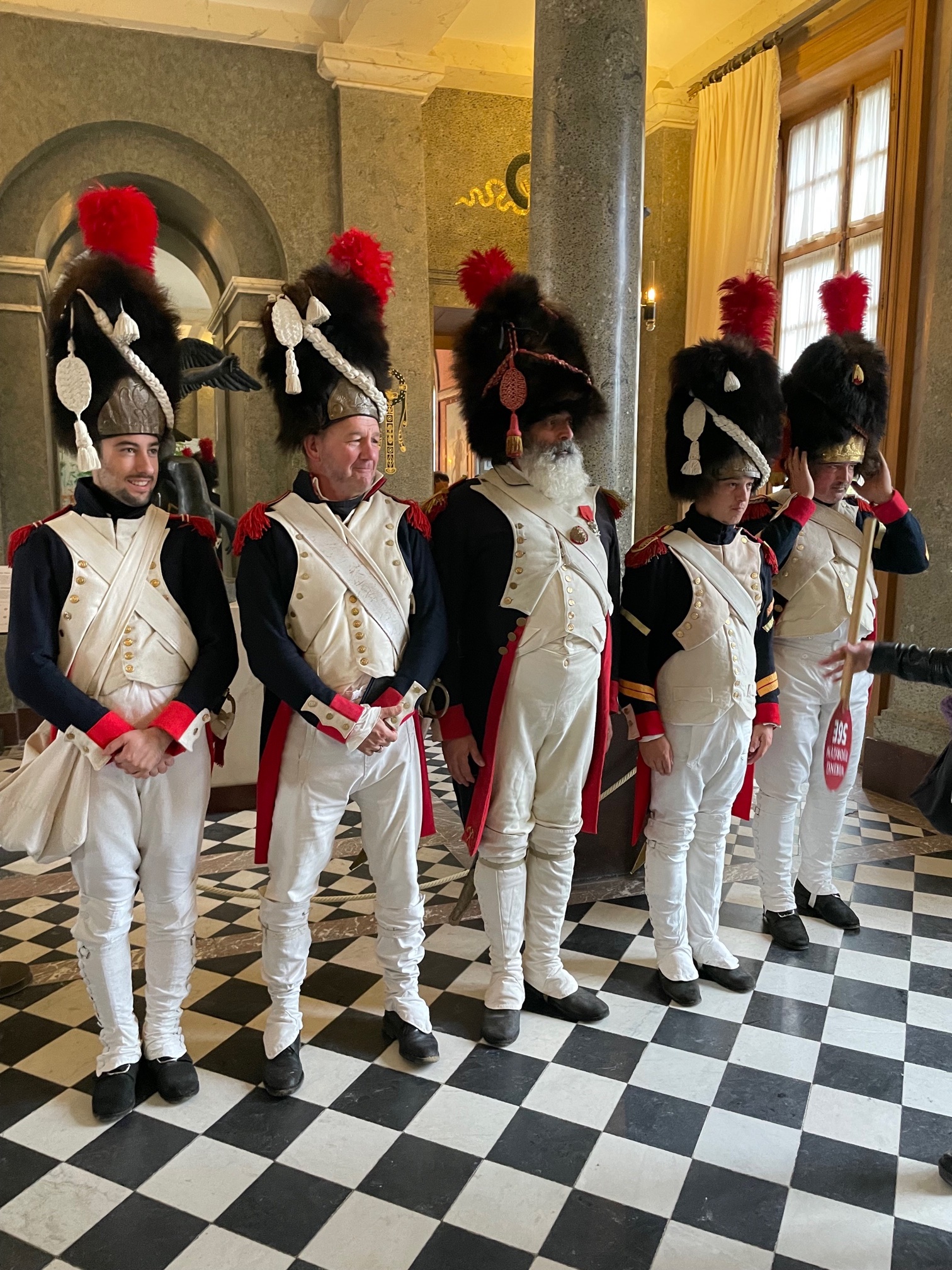
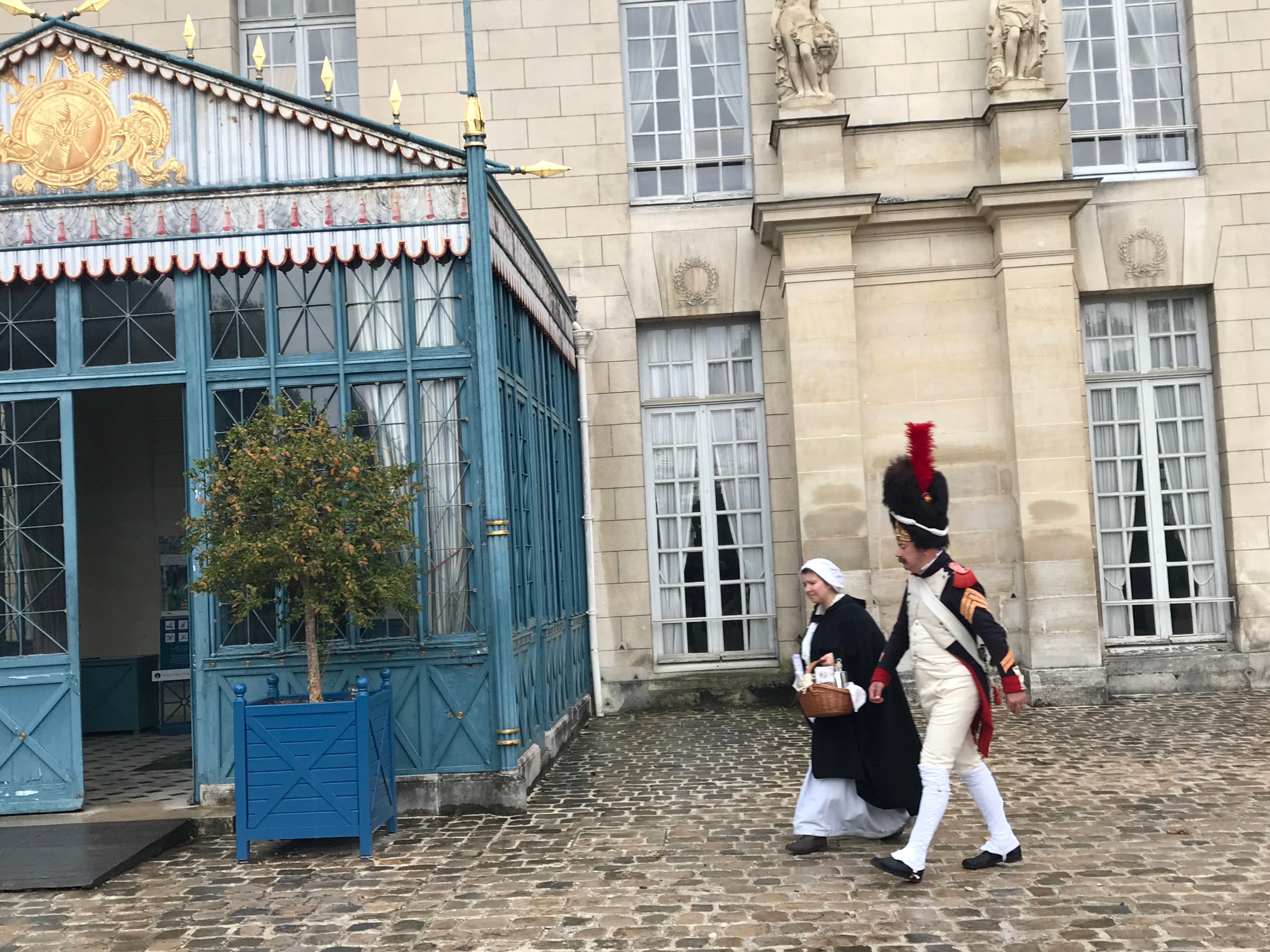
The past becomes present at Malmaison
But even if they hadn’t been there, Malmaison felt special to me. And though I loved seeing the rooms and furnishings, I eventually summoned my rudimentary French and mumbled to our guide (probably totally incorrectly), “Madame, sil vous plait, je voudrais le jardin,” and fled outside. Since it was September, the roses were few, but still . . . that jardin. Some gardens in grand houses are done for show or to display wealth and taste, even power (think Versailles). Josephine’s garden (though, of course, completely restored from the original) felt more personal; as though it still retained some of that original love—Josephine and Napoleon’s love for one another, but also her love for flowers and the natural world as well.
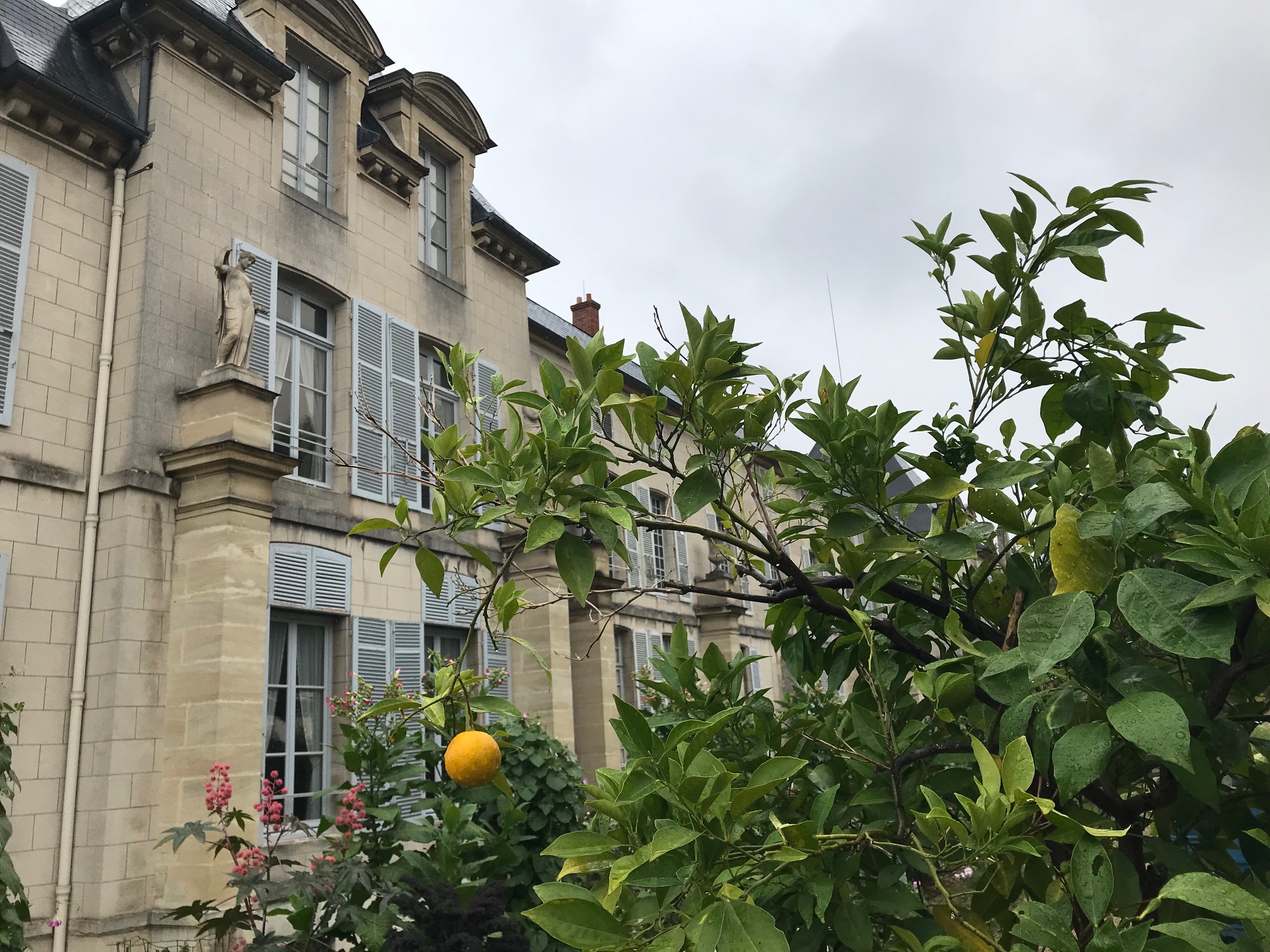
The gardens
When Napoleon declared himself Emperor in 1804, Josephine became Empress. Even though he divorced her five years later due to her failure to give him an heir (why is it always about the heirs?), they still loved one another. He allowed her to keep her title (l’Impératrice—I love that title!) and also Chateau de Malmaison, where she died in 1814, age 50. Napoleon was living in exile on the island of Elba by then; when he learned of her death he stayed locked in his room for two days.
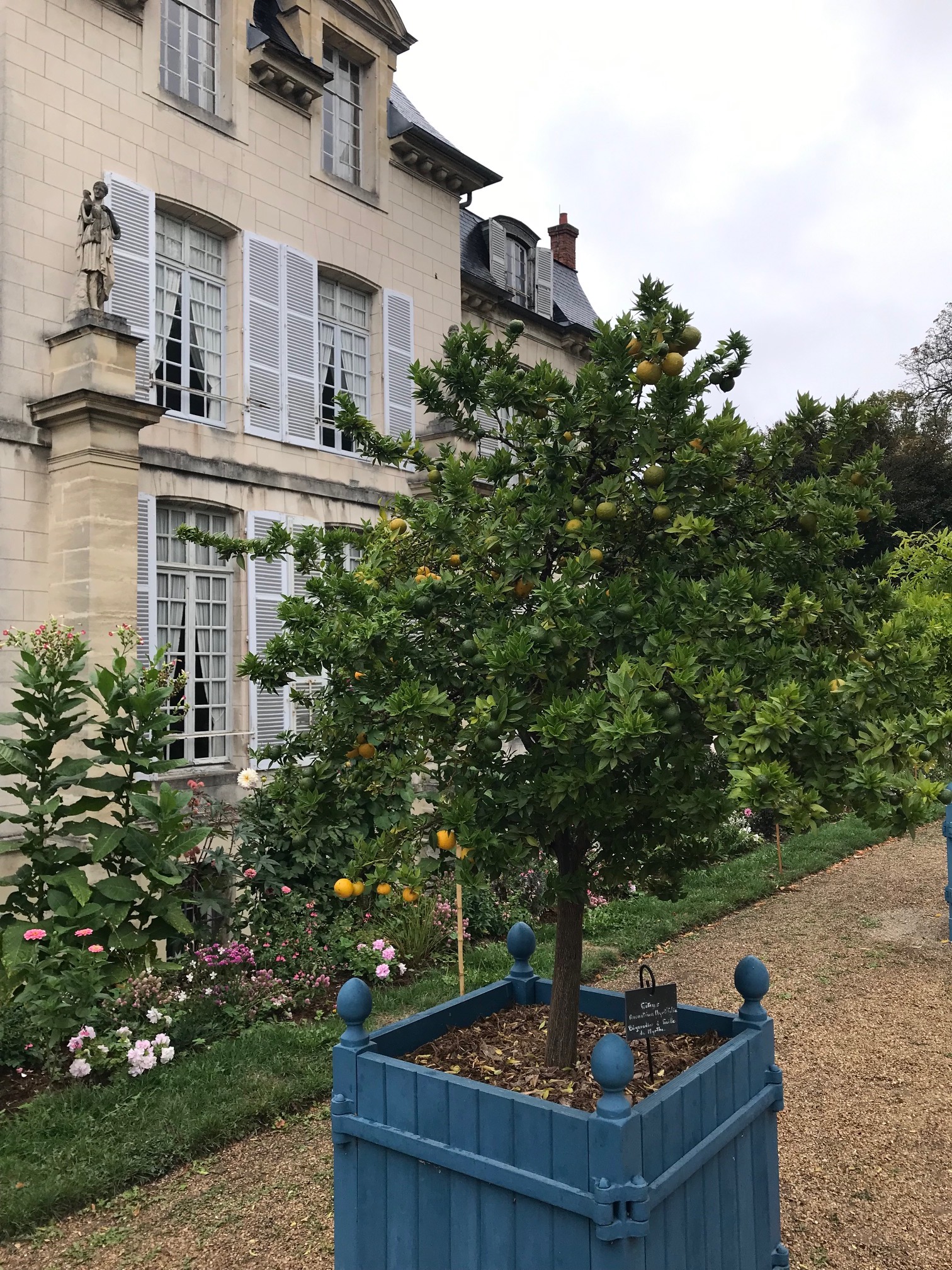
Exuberance and order at Malmaison
Though the garden felt earthy and moody on that day on the cusp of autumn, there was also something exotic and tropical about it, almost otherworldly. The way flowers and plants are jumbled together in the beds, contrasted with the classical order of rows of standard topiaries in square pots in the courtyard and lining the paths. I understood why fairy tales like Cinderella originated in France—there’s something so once upon a time about that landscape.
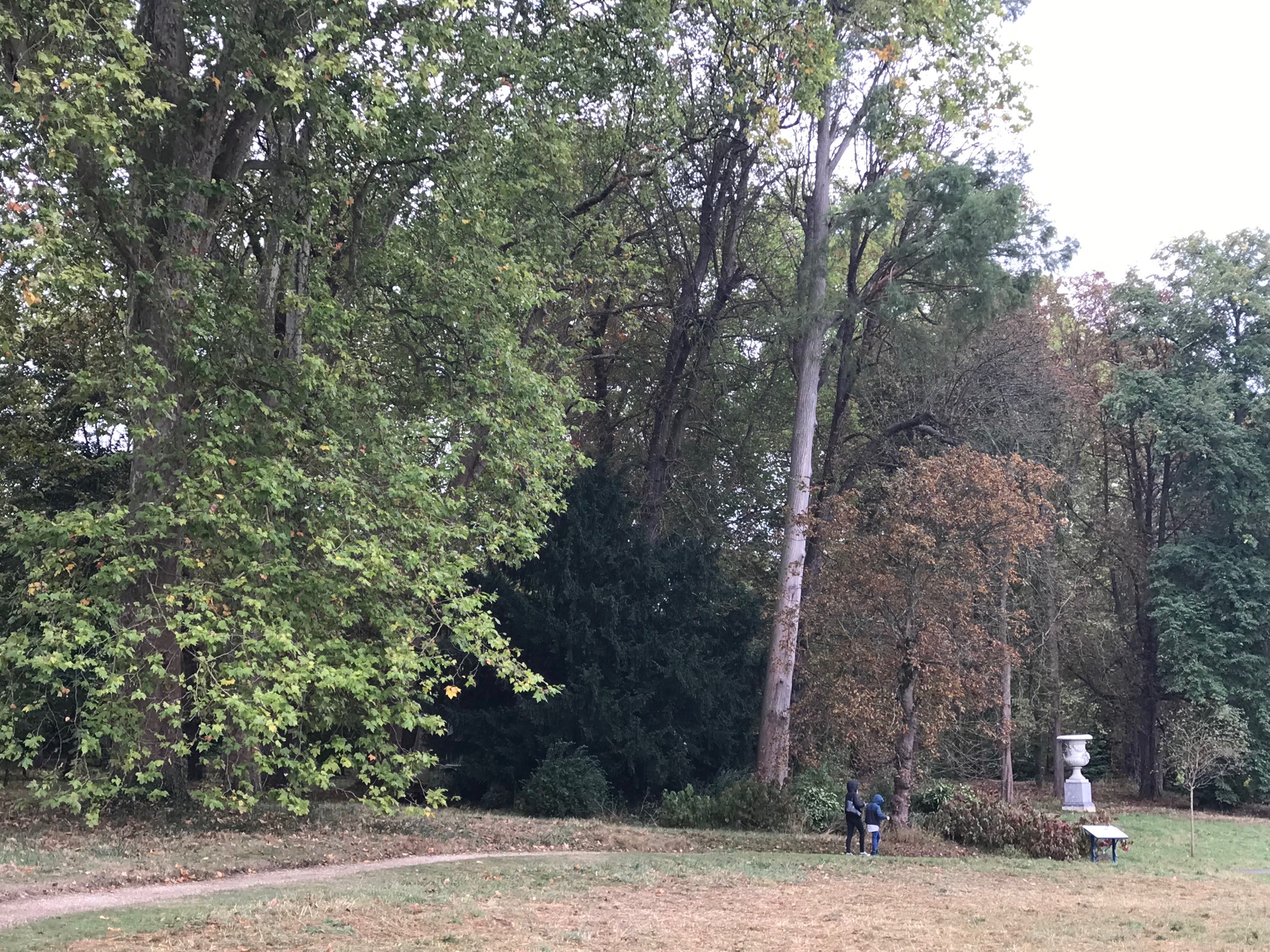
Fairy tale landscape at Malmaison
Closer to home, F. Scott Fitzgerald said, “Life starts all over again when it gets crisp in the Fall.” As I move back inside this month and turn my focus from the garden to the house, I’m feeling a surge of that fresh fall energy to spruce things up inside. At the same time, I’m ready to snug into my favorite reading spot on the couch with books, blankets, and pots of tea.
Whatever l’automne brings your way, I’m wishing you all the pumpkin-y joys of the cozy season!
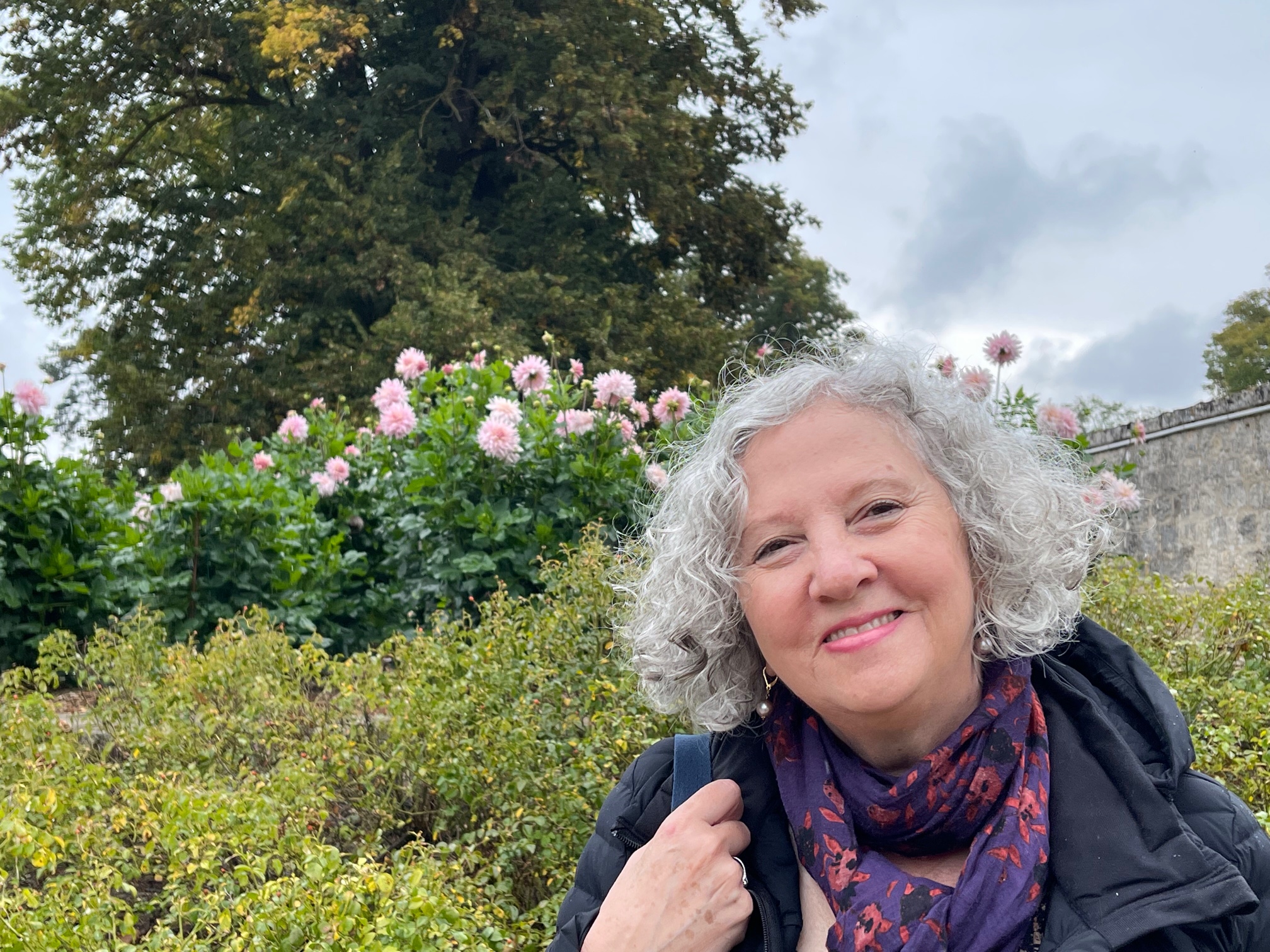
At Malmaison
All photos my own

Lovely post, Robin! Yes, FALL is one of my top four favorite seasons. 🧡🍁🍂🌻🎃
Thank you, Donna. Your love of the seasons continues to inspire me! 🙂
Lovely, as always!
Thank you, Robin!